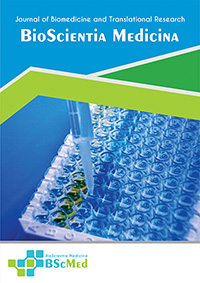Main Article Content
Abstract
Background: Sebaceous gland carcinoma (SGC) is a rare, aggressive adnexal malignancy of the eyelid, notorious for masquerading as benign inflammatory conditions. Presentations involving massive, destructive orbito-facial invasion are exceptionally rare and pose profound diagnostic and therapeutic challenges, often reflecting a confluence of biological aggression and systemic delays in care.
Case presentation: A 68-year-old male presented with a one-year history of a progressively enlarging mass on his left upper eyelid, which had evolved into a giant, 15 x 15 x 7 cm fungating tumor, causing complete destruction of the orbital contents and extensive invasion into adjacent facial structures. An initial incisional biopsy was paradoxically interpreted as benign sebaceous hyperplasia. Due to the stark clinico-pathological discordance, a repeat, deeper biopsy was performed. The subsequent histopathological examination revealed a high-grade carcinoma, and the diagnosis was definitively confirmed by a panel of immunohistochemical stains, including strong positivity for Epithelial Membrane Antigen (EMA) and Cytokeratin 7 (CK7). The disease was staged as T4dN1M0 and deemed unresectable.
Conclusion: This case documents a catastrophic outcome of SGC, resulting from a combination of delayed patient presentation and initial diagnostic error. It highlights that giant SGC, while rare, must be considered in the differential of destructive facial tumors and underscores that immunohistochemistry is mandatory for resolving clinico-pathological paradoxes in ocular adnexal pathology. This case serves as a call to action for improved public health awareness and enhanced diagnostic acumen to prevent such devastatingly advanced presentations.
Keywords
Article Details
As our aim is to disseminate original research article, hence the publishing right is a necessary one. The publishing right is needed in order to reach the agreement between the author and publisher. As the journal is fully open access, the authors will sign an exclusive license agreement.
The authors have the right to:
- Share their article in the same ways permitted to third parties under the relevant user license.
- Retain copyright, patent, trademark and other intellectual property rights including research data.
- Proper attribution and credit for the published work.
For the open access article, the publisher is granted to the following right.
- The non-exclusive right to publish the article and grant right to others.
- For the published article, the publisher applied for the Creative Commons Attribution-NonCommercial-ShareAlike 4.0 International License.





